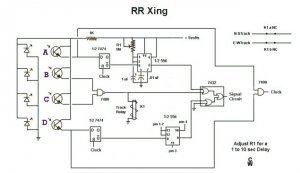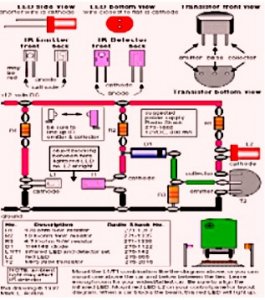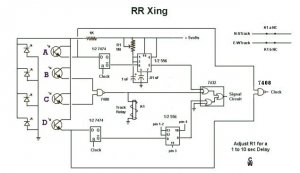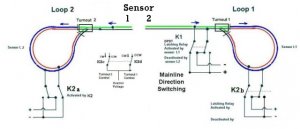A few months ago N Gauger wrote in another thread, http://www.the-gauge.com/forums/showthread.php?s=&threadid=5754&highlight=detector that he would like a grade crossing detector that would work like the prototype. I have been working on this project for a special application on my own for awhile and have come up with the following schematic. The components are relitivly inexpensive. The most difficult aspect I have come up with yet is the placement and concealment of the sensors. In this diagram I am using light activated sensors. There are additional control features that my project requires that wouldn't be needed on most layouts.
Sensors B & C would be placed on either side of the crossing, while A & D would pe placed where you would want the crossing signals to detect the oncoming train.
Theoretically the signals would activate when the aproaching train activated the first detector and would shut off as soon as the last car cleared the crossong.
I say theoretically because I have yet to build a prototype to determin the validity of my idea. If anyone is really interested in it I could probably find some time to breadboard it and test it's viability.
Sensors B & C would be placed on either side of the crossing, while A & D would pe placed where you would want the crossing signals to detect the oncoming train.
Theoretically the signals would activate when the aproaching train activated the first detector and would shut off as soon as the last car cleared the crossong.
I say theoretically because I have yet to build a prototype to determin the validity of my idea. If anyone is really interested in it I could probably find some time to breadboard it and test it's viability.





